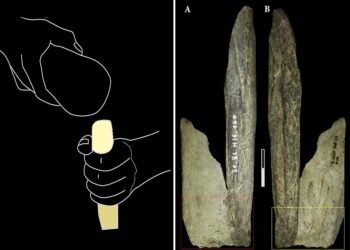Archaeologists in the Uzgen district of the Osh region, Kyrgyzstan, have uncovered a towering clay vessel known as a ‘hum,’ standing at an impressive height of 1.75 meters.

Abdyrahmanov, a member of the archaeological team representing the National Academy of Sciences of the Kyrgyz Republic, unveiled this find, which dates back to the 7th to 4th centuries BCE.
The excavation, under the leadership of Mars Boranbaev, began only 5-6 days before the significant discovery on March 1, unveiling the ‘hum’ nestled 2.5 meters below the ground’s surface.
Abdyrahmanov highlighted the significance of this find, stating, “After meticulous cleaning, the ‘hum’ now awaits further examination as part of our ongoing research endeavors. Already, fragments of clay pottery indicative of the Shoro-Bashat culture have been unearthed, representing the rich history of the region.”
The Uzgen district, situated in proximity to the Kyzyl-Oktiabr area, has long been recognized for its historical importance. Abdyrahmanov noted that the bustling activity near the old city has spurred intensified archaeological research, with hopes of uncovering additional relics of antiquity.
In addition to the archaeological findings, construction on the Uzgen bypass road has been progressing steadily. Construction on the Uzgen bypass road, valued at 2.6 billion soms, aims to alleviate traffic congestion in the area, offering a toll route designed for unidirectional travel. Development efforts on five sections of the bypass road remain underway, marking a harmonious blend of modern infrastructure projects and the preservation of ancient heritage.

























I would really like to know what they stored inside it?